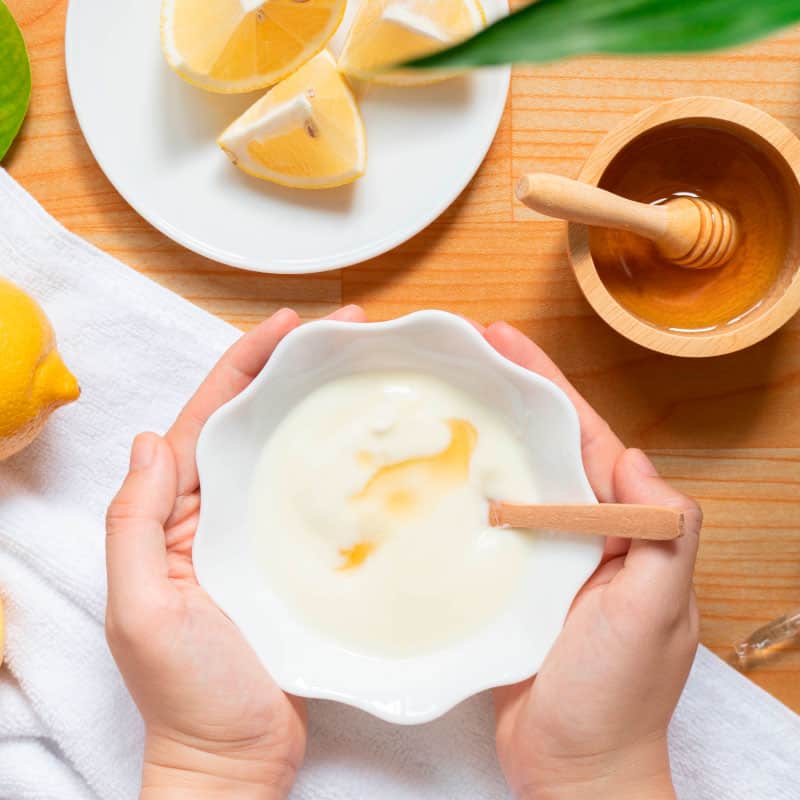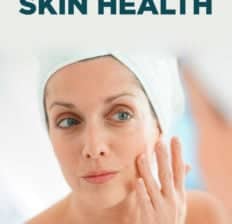This Dr. Axe content is medically reviewed or fact checked to ensure factually accurate information.
With strict editorial sourcing guidelines, we only link to academic research institutions, reputable media sites and, when research is available, medically peer-reviewed studies. Note that the numbers in parentheses (1, 2, etc.) are clickable links to these studies.
The information in our articles is NOT intended to replace a one-on-one relationship with a qualified health care professional and is not intended as medical advice.
This article is based on scientific evidence, written by experts and fact checked by our trained editorial staff. Note that the numbers in parentheses (1, 2, etc.) are clickable links to medically peer-reviewed studies.
Our team includes licensed nutritionists and dietitians, certified health education specialists, as well as certified strength and conditioning specialists, personal trainers and corrective exercise specialists. Our team aims to be not only thorough with its research, but also objective and unbiased.
The information in our articles is NOT intended to replace a one-on-one relationship with a qualified health care professional and is not intended as medical advice.
How to Keep Sebum in Balance (Plus Why It’s Important for Skin & Hair)
July 10, 2021

When it comes to fighting acne breakouts and keeping skin moisturized, we hear a lot about the effects of different products and lifestyle habits on our production of sebum. What is sebum exactly, and why is balancing it one of the keys to maintaining healthy-looking skin and hair?
Sebum is defined as “an oily secretion of the sebaceous glands.” It’s basically your skin’s natural oils that help maintain a normal moisture level and also protect your skin from damage.
Both an overproduction and underproduction of sebum can lead to skin concerns, so below we look at ways to keep levels in balance.
What Is Sebum?
Sebum is a waxy, fatty substance that is composed of triglycerides, wax esters, squalene and free fatty acids. While sebum is one part of your skin’s oils, it’s not the only thing that makes your skin feel greasier. It can combine with dead skin cells, sweat and bacteria too.
Your body makes sebum inside sebaceous glands, which are microscopic exocrine glands found within the skin that usually open into hair follicles. There are also some sebaceous glands that exist independently and aren’t connected to hair follicles, but most of these glands are found in hair-covered areas.
You’ll find the most sebum on your face and scalp. This explains why people tend to develop pimples on their faces most often and also why hair becomes oily when it hasn’t been washed.
Sebum is produced on all other parts of the skin too, with the exception of the palms of the hands and soles of the feet (two places that can become cracked and dry due to lacking moisture).
What does sebum look like?
This waxy substance is a clearish-yellow color, but usually you can’t actually see it on your skin. However, when your pores become clogged with too much oil it can lead to blackheads, whiteheads and red pimples.
Why does sebum smell so bad? Sebum itself is actually odorless, but it can be broken down by bacteria living on the skin that produces a strong body odor.
The more oil that builds up on the skin, the more that bacteria can reproduce. This contributes to the smell intensifying.
Related: What Is Double Cleansing and Does It Really Work?
Function
What is sebum’s function? The main role that it plays is maintaining skin’s homeostasis by coating, protecting and lubricating the skin.
It’s made not only by humans, but by all mammals. Some animals make more sebum than others depending on their skin types and the climates they live in.
Balanced production of sebum helps keep skin smooth, elastic, healthy-looking and protected from infections. It also helps decrease symptoms like acne, hyperplasia and sebaceous adenoma, and it maintains the skin’s normal pH level.
There are several different types of sebum made throughout the body, each of which serves a unique function.
- Tarsal glands located in the eyelids secrete a special type of sebum into tears that lubricates the eyes and prevents dry eyes.
- Areolar glands located in female nipples produce a certain type of sebum that lubricates the nipples and assists in breastfeeding.
- Fordyce sebaceous glands located on the lips, gums, inner cheeks and genitals also produce oils that help maintain a normal moisture level of these body parts.
Related: Micellar Water: The Do-It-All Skin Care Ingredient
Benefits
Here’s more about some of the benefits of normal/balanced sebum production:
1. Protects Against Skin Infections
Sebum is part of the body’s integumentary system that defends against infections caused by microorganisms on the skin. A normal level of oil on the skin can help stop microbes from penetrating the skin and causing various bacterial and fungal problems.
2. Can Help Fight Acne
While a normal amount of oiliness on the skin is important for keeping it smooth and comfortable, too much sebum accumulating inside pores leads to greasy/shiny-looking skin and pimples. The goal is to strike a balance so your skin is lubricated without becoming too greasy, which causes bacteria to become trapped inside pores.
3. Moisturizes the Skin and Defends Against Damage
Your skin’s natural oils help lock in water and moisture without letting too much escape. This leads to improved skin elasticity, tone and a healthy appearance.
Sebum can also help protect skin against sunburns and UV damage that contribute to signs of aging.
4. Helps Balance the Skin’s pH
Sebaceous glands secrete acids, including the type called acid mantle, which help maintain the skin’s surface and act as barriers. Oil production is needed to maintain the normal acidic pH of the skin, which is between 4.5 and 6.2.
Acidity helps maintain the integrity of the skin barrier and assists in absorption of nutrients into the skin.
5. Plays a Role in Fetal Development and Breastfeeding
During pregnancy and fetal development, certain types of sebum, such as vernix caseosa, are produced on the skin of the fetus to protect it from amniotic fluid. The areolar glands also produce oily fluids that lubricate the nipples and help with lactation.
Related: Mandelic Acid Benefits for Skin Cell Turnover and Acne Reduction
Overproduction vs. Underproduction
Sebum production is influenced by genetics, age, hormone levels, use of some medication, topical products, diet and environmental factors, such as the climate you live in.
What causes excess sebum? Overactive sebaceous glands produce excess sebum. Genetics and fluctuating hormones, in addition to a number of habits and health conditions, can cause excess sebum production.
Some signs that you’re experiencing overproduction of sebum include:
- having acne
- clogged pores
- smelly skin/increased body odor
- greasy hair
Seborrheic dermatitis is another potential problem. It develops when an overproduction of sebum mixes with yeast and leads to flaky and itchy skin on the forehead, cheeks and scalp.
Some reasons that someone may be producing too much oil/wax on the skin and scalp include:
- Changes in levels of reproductive hormones. Hormones affect the rate of sebum secretion. For example, increased androgens, such as testosterone and dihydrotestosterone, stimulate secretion, while estrogens typically inhibit secretion.
- Your age. Babies produce high levels of sebum and so do teenagers going through puberty. Production then declines but can be triggered by life events like pregnancy or stress.
- Use of medications. Hormonal medications often increase sebum production, but birth control pills and antiandrogens may reduce it.
- Stress. Stress affects your pituitary and adrenal glands, which has an effect on other hormones and how much sebum is produced.
- Ovarian and testicular conditions. Both of these impact how your body produces oils.
On the other hand, underproduction of sebum can lead to dry, rough skin and hair that lacks moisture. Eczema can also be caused by skin lacking moisture.
Related: Chlorine Rash Symptoms, Causes, Treatment & Prevention
How to Keep It in Balance
How do you stop producing too much sebum? To balance your body’s production of oils and keep things like acne under control, here are some steps to take:
1. Cleanse Your Skin and Hair Regularly
Most people should use a cleanser on the face one to two times daily, depending on how dry or oily their skin is.
Certain cleansers and products can help reduce and remove sebum, including those with salicylic acid and glycolic acid (such as alpha hydroxy acid). Benzoyl peroxide can also be applied to acne-prone skin.
These acids help unclog pores and remove dead skin cells. This can help prevent acne.
You don’t want to go overboard, however, because this can dry out your skin.
Applying willow bark extract or witch hazel to skin can also reduce oiliness.
Another topical treatment option is retinoids. These help turn over skin cells and shrink the appearance of pores.
2. Prevent Too Much Dryness
If your skin tends to lack moisture or you deal with seborrheic dermatitis, try these treatments:
- Apply moisturizers to your skin, like hydrating coconut oil and shea butter. Ceramides are also recommended for people with eczema and dryness.
- Wear sunscreen/SPF when you’re in the sun for more than 10–20 minutes. In general, try to avoid too much sun exposure that burns and dries skin.
- Don’t shampoo too often or over-wash your skin.
- Avoid products with irritating fragrances, alcohol, acids and dyes.
- Increase your intake of antioxidant-rich foods, such as berries and leafy greens. These support general skin health.
- Use a humidifier if the air in your home is very dry. (Dandruff usually gets worse during the fall and winter when air is very dry.)
3. Work on Balancing Hormone Production
Because hormones have a big impact on how much sebum your skin produces, here are steps to take in order to balance hormones to prevent too much or too little from being made:
- Get enough sleep, about seven to nine hours most nights. Ideally try to get to bed by 10 p.m., and stick with a regular sleep-wake-cycle as much as possible.
- Avoid foods that disrupt your blood sugar levels or are high in trans fats and too much saturated fat. A generally unhealthy diet can disrupt hormones and might lead to higher oil production. It’s best to limit or avoid added sugar, processed carbs and refined vegetable/seed oils.
- Eat more healthy fats, like omega-3s, nuts, seeds, avocado and olive oil.
- Consider trying supplements like probiotics, omega-3s, adaptogenic herbs like holy basil and ashwagandha, and vitamin D. Evening primrose oil, reishi mushroom, chaste tree berry, black cohosh root and schisandra berry are other supplements that are known to support reproductive health, especially for females.
- Exercise, but don’t overdo it. Exercise is great for relieving stress and lowering inflammation. However, too much may increase androgens. This can cause more sebum to be produced.
- Address any emotional imbalances and sources of chronic stress in your life. Try practicing meditation or healing prayer, doing breathing exercises, spending time outdoors, journaling, reading, and exercising every day. Traditional Chinese Medicine therapies like acupuncture and massage can also help improve hormonal balance.
- Talk to your doctor about medications you take. Some medications that can mess with your hormone balance include some types of birth control pills, corticosteroids, stimulants, statins, dopamine agonists, rexinoids and glucocorticoids.
Conclusion
- What is sebum? It’s your skin’s natural oils and technically a waxy substance produced by your body’s sebaceous glands.
- Sebaceous glands are small glands found all over your body, most abundantly on the scalp and face. They can become oily/greasy when you produce too much.
- The main function and benefits of sebum include coating, protecting and lubricating your skin, while also defending against dryness, cracking and infections.
- To prevent overproduction and underproduction, aim to eat a healthy diet, cleanse your skin often but not too much, get sun some exposure without overdoing it, exercise, and work on balancing hormones.














Thank you for this information. It will steer me forward in the right direction